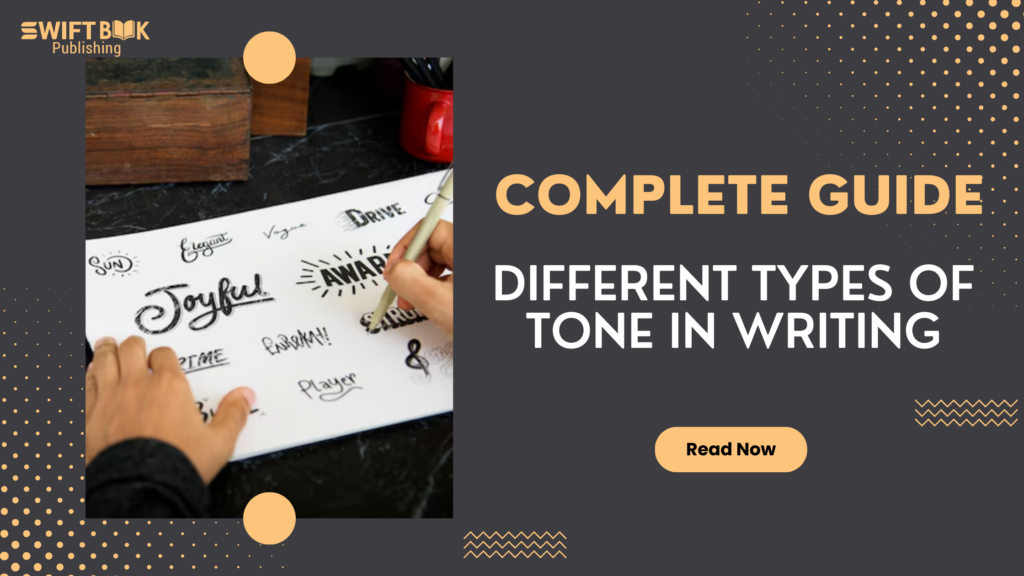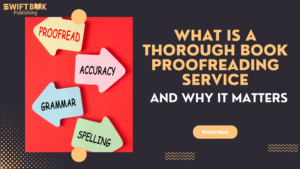Have you ever read something that made you laugh out loud, only to feel your heart sink with the very next sentence? That’s the power of tone in writing. Just like our voices shift with our moods, the written word can convey a spectrum of emotions, from playful humor to serious concern.
Essentially, tone in writing refers to the author’s attitude or feelings towards the subject matter and the reader. It’s the subtle (or not-so-subtle) flavor infused into the writing, shaping how the message is received and interpreted.
Think about it: a formal email to your boss will have a very different tone than a casual text to a friend, even if they’re both discussing the same topic. This is because different tones evoke different responses. A humorous tone might entertain and engage, while a formal tone might command respect and attention.
By understanding the nuances of different tones in writing – whether it’s the sharp edge of sarcasm, the gentle warmth of encouragement, or the cool objectivity of a news report – you gain the power to connect with your readers on a deeper level and achieve your desired impact.
What is the Tone in Writing?
While we often use “tone” to describe how we speak, it plays an equally crucial role in our writing. In essence, tone in writing is the implied attitude or feeling that the author has towards the subject matter and the audience. It’s like the emotional undercurrent that runs through the words, influencing how the reader perceives the message.
It’s easy to confuse tone with similar concepts like voice and style, but understanding their distinctions is key:
- Voice: This refers to the writer’s unique personality and perspective that shines through their writing. It’s what makes their work distinctly theirs.
- Style: This encompasses the writer’s choices regarding sentence structure, vocabulary, and overall flow of the writing. It’s like their literary fingerprint.
- Tone: This is the emotional flavor embedded within the writing, influenced by the writer’s attitude towards the subject and the reader.
So, how exactly do writers convey tone? It’s all in the details:
- Word Choice: The words we choose carry different connotations and emotional weight.
Examples of tone in writing
“slim” and “skinny” both describe a thin physique, but “skinny” carries a slightly more negative connotation.
- Sentence Structure: Short, punchy sentences can create a sense of urgency or excitement, while long, winding sentences can sound more thoughtful or contemplative.
- Punctuation: An exclamation mark conveys enthusiasm, while an ellipsis (…) can suggest hesitation or uncertainty.
- Literary Devices: Figurative language like metaphors, similes, and hyperbole can all contribute to the overall tone. For example, using dark humor to describe a serious topic can create a cynical or satirical tone.
By carefully manipulating these elements, writers can craft the desired emotional response in their readers, whether it’s laughter, empathy, anger, or anything in between.
Kinds of Tones in Writing
While we can identify numerous specific tones, they often fall under broader categories that help us understand their underlying purpose and effect on the reader. Let’s explore a few key distinctions:
Formal vs. Informal Tone
- Formal Tone: This tone is characterized by its professional and often impersonal approach. It employs complex sentence structures, sophisticated vocabulary, and avoids contractions or slang. Formal tone is often used in academic writing, business correspondence, or when addressing a respected authority.
- Example: “The aforementioned research provides compelling evidence in support of the hypothesis, suggesting a strong correlation between the variables under investigation.”
- Informal Tone: This tone is more relaxed and conversational, mimicking how we speak to friends or close colleagues. It uses simpler language, contractions, and may even incorporate slang or colloquialisms to create a sense of familiarity.
- Example: “The study’s findings totally back up their idea, showing a clear link between those things they were looking at.”
Positive vs. Negative Tone
- Positive Tone: This tone conveys optimism, enthusiasm, or approval towards the subject matter. It uses uplifting language, focuses on strengths and benefits, and aims to inspire or motivate the reader.
- Example: “The new initiative is a groundbreaking step forward, promising to revolutionize the way we approach education and empower future generations.”
- Negative Tone: This tone highlights flaws, shortcomings, or expresses disapproval or pessimism. It may use critical language, focus on drawbacks, and evoke feelings of disappointment or concern in the reader.
- Example: “The proposed plan is fundamentally flawed, riddled with logistical nightmares and unrealistic expectations, and will ultimately lead to disastrous consequences.”
Objective vs. Subjective Tone
- Objective Tone: This tone prioritizes neutrality and impartiality. It presents information factually, avoiding personal opinions, biases, or emotional language. Objective tone is crucial for journalistic reporting, scientific writing, or any context where unbiased information is paramount.
- Example: “The data indicates a 5% increase in sales following the implementation of the new marketing strategy.”
- Subjective Tone: This tone embraces personal perspectives, opinions, and interpretations. It allows the writer’s feelings and biases to come through, often using emotional language and personal anecdotes to connect with the reader on a more personal level.
- Example: “As a seasoned marketer, I believe the new campaign is nothing short of brilliant; it’s refreshing, engaging, and speaks directly to the target demographic.”
Different Tones in Writing: A Closer Look
Here’s a breakdown of each targeted tone, highlighting their unique characteristics and when to use them:
Aggressive Tone in Writing
Definition: Aggressive tone is confrontational and hostile, often seeking to dominate or attack. It can be characterized by harsh language, insults, threats, and an overall lack of respect for the reader’s perspective.
When to Use (Or Rather, When to Avoid): While aggression might have its place in fictional dialogue to portray a specific character, it’s generally counterproductive in most writing situations. It can alienate readers, escalate conflict, and damage your credibility.
Example: “You clearly have no idea what you’re talking about. Your arguments are baseless and your logic is flawed.”
Assertive Tone in Writing
Definition: Assertive tone is confident and direct without being aggressive. It involves clearly stating your needs and opinions while respecting the views of others. This tone uses strong verbs, “I” statements, and focuses on solutions rather than blame.
When to Use: Assertive tone is valuable in professional settings, persuasive writing, or when you need to establish clear boundaries. It conveys confidence and competence without resorting to hostility.
Example: “While I appreciate your perspective, I believe our team needs to prioritize this project to meet the deadline. I’m open to discussing alternative solutions after we achieve this goal.”
Casual Tone in Writing
Definition: Casual tone is relaxed, informal, and friendly, resembling how we speak to friends or family. It uses simpler language, contractions, slang, and humor to create a sense of familiarity and approachability.
When to Use: Casual tone is suitable for personal blogs, social media posts, creative writing, or when addressing a familiar audience. It helps build rapport and create a more conversational atmosphere.
Example: “Hey guys, check out this awesome new coffee shop I found! The vibe is super chill and their lattes are to die for.”
Conversational Tone in Writing
Definition: Conversational tone aims to mimic the natural flow of spoken dialogue. It uses shorter sentences, contractions, direct questions, and addresses the reader directly to create a sense of engagement and immediacy.
When to Use: Conversational tone is effective for blog posts, articles, marketing copy, or any writing that aims to connect with the reader on a personal level. It helps make the writing feel more relatable and engaging.
Example: “Ever feel like you’re stuck in a rut? We’ve all been there. But what if I told you there’s a simple way to break free and unlock your full potential?”
How to Identify Different Tones (Voices) in Writing
This provides practical tips and strategies for analyzing and identifying different tones in various writing examples.
Negative Tone in Writing
Definition: Negative tone focuses on flaws, drawbacks, and expresses pessimism, disapproval, or criticism. It often uses emotionally charged language, highlights problems, and can leave the reader feeling disheartened or anxious.
When to Use (With Caution): While negativity is generally discouraged, it can be used strategically in persuasive writing to highlight the urgency of a problem or the inadequacy of an opposing viewpoint. However, it’s crucial to balance negativity with solutions and avoid excessive negativity that could alienate the reader.
Example: “The current state of our education system is appalling. Students are graduating without essential skills, teachers are overworked and underpaid, and the curriculum is hopelessly outdated.”
Neutral Tone in Writing
Definition: Neutral tone prioritizes objectivity and impartiality, presenting information factually without introducing personal opinions or biases. It avoids emotionally charged language, focusing on clarity and accuracy.
When to Use: Neutral tone is essential for news reporting, scientific writing, technical documentation, or any context where presenting unbiased information is crucial.
Example: “The study found a statistically significant correlation between hours of sleep and cognitive performance in adults aged 25-40.”
Passive Tone in Writing
Definition: Passive tone is characterized by its indirectness and lack of agency. It often uses passive voice constructions (“The ball was thrown by John” instead of “John threw the ball”), avoids strong verbs, and can sound hesitant or lacking in confidence.
When to Use (Sparingly): While passive voice has its place in specific contexts (e.g., scientific writing), excessive use of passive tone can make your writing sound weak, wordy, and less engaging.
Example: “Mistakes were made that resulted in significant financial losses for the company.” (Passive) vs. “The management team made
Style and Tone in Writing: A Powerful Partnership
While distinct, style and tone in writing are deeply intertwined, working in harmony to create the desired effect on the reader. Think of style as the clothing and tone as the attitude of your writing. Just as your outfit choice can convey different impressions (casual, professional, rebellious), your tone can reflect a range of attitudes (humorous, serious, critical).
Here’s how different writing styles interact with tone:
Descriptive Writing
- Focus: Creating vivid imagery and sensory experiences for the reader.
- Tone’s Influence: Tone dictates the overall mood and atmosphere of the description. A melancholic tone might use somber language and imagery (“The rain wept relentlessly, mirroring the grief that consumed her”), while a joyful tone would employ brighter language (“Sunlight danced upon the rippling waves, painting the scene with an infectious joy”).
Narrative Writing
- Focus: Telling a story with a clear beginning, middle, and end.
- Tone’s Influence: Tone shapes the emotional arc of the narrative. A suspenseful tone might use short, clipped sentences and vivid action verbs to build tension (“He crept through the shadows, heart pounding, every creak a potential threat.”), while a humorous tone might employ witty dialogue and exaggerated descriptions for comedic effect.
Persuasive Writing
- Focus: Convincing the reader to adopt a particular viewpoint or take action.
- Tone’s Influence: Tone is crucial for establishing credibility and resonating with the audience. An authoritative tone, supported by facts and logical reasoning, can be persuasive (“The evidence overwhelmingly suggests that climate change is real and human-caused.”), but an overly aggressive tone can alienate readers. A more empathetic tone, acknowledging opposing viewpoints, might be more effective in bridging divides.
Understanding the interplay between style and tone allows you to make conscious choices that enhance your writing.
By carefully selecting the right style and tone combination, you create a powerful synergy that captivates readers, evokes desired emotions, and ultimately makes your writing more impactful and memorable.
Wrapping up
As we’ve explored, understanding and utilizing different tones in writing is crucial for effectively conveying your message and connecting with your audience on an emotional level.
By learning the nuances of different tones in writing – from the assertive confidence of a business proposal to the warm familiarity of a personal letter – you unlock a powerful tool that elevates your writing from merely conveying information to creating a lasting impact. So, experiment, explore, and discover the full range of emotions your words can evoke.
FAQS
- Can I use humor in formal writing?
While humor can be effective, it’s generally best to avoid it in formal writing like academic papers or business reports. These contexts require a more serious and objective tone. However, a touch of subtle humor might be acceptable depending on the specific situation and audience.
- How can I tell what tone is appropriate for my writing?
Consider your audience, purpose, and the overall message you want to convey. A casual tone suits a blog post for friends, while a professional tone is essential for a job application. When in doubt, err on the side of formality.
- Is it ever okay to use a negative tone in my writing?
While excessive negativity is discouraged, a strategically placed negative tone can be effective in persuasive writing. You can highlight the severity of a problem or the urgency for change, but always balance it with solutions and a hopeful outlook.
- Does using a conversational tone make my writing unprofessional?
Not necessarily! A conversational tone can make your writing more engaging and relatable, even in professional contexts. The key is to strike a balance between professionalism and approachability, avoiding overly casual language or slang.
- How can I improve my ability to identify different tones in writing?
Reading widely in different genres and styles is excellent practice. Pay attention to the author’s word choice, sentence structure, and overall approach to understanding how they create specific effects. You can also analyze examples of different tones in writing exercises or online resources.











